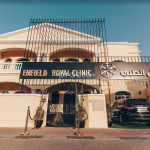Gums play a crucial role in both the appearance and health of your smile. If you’ve been advised to undergo a gum-related procedure, understanding the difference between gum contouring and traditional gum surgery can help you make an informed decision. Whether you’re seeking cosmetic refinement or treatment for gum disease, the right procedure will depend on your individual needs. For those exploring gum contouring in Dubai, it’s especially helpful to understand how this modern, minimally invasive option compares to more conventional surgical approaches.
Purpose of the Procedures:
Gum contouring and traditional gum surgery serve different purposes. Gum contouring is primarily a cosmetic procedure designed to reshape or re-sculpt the gum line for aesthetic improvements. It’s often used to correct a “gummy” smile or uneven gums. Traditional gum surgery, on the other hand, is typically performed to treat underlying oral health issues such as advanced periodontal disease, gum infections, or bone loss. It involves deeper intervention aimed at restoring gum and bone health rather than visual enhancement.
Techniques Used:
Gum contouring is usually performed using a soft-tissue laser or specialized dental scalpel for precise gum reshaping with minimal bleeding. Laser tools cauterize as they cut, which reduces discomfort and speeds healing. Traditional gum surgery often involves incisions, sutures, and deeper cleaning or grafting to remove diseased tissue or regenerate lost bone. These procedures may require flaps to be cut into the gum and are generally more invasive than gum contouring.
Recovery Time:
Because gum contouring is less invasive, the recovery period is typically shorter. Most patients resume normal activities within a day or two and experience only mild swelling or sensitivity. Healing is usually complete within a week. In contrast, traditional gum surgery may involve several days of discomfort, swelling, and a more restricted diet. Stitches might be used, and healing can take several weeks, depending on the complexity of the procedure.
Pain and Discomfort:
Gum contouring tends to be more comfortable both during and after the procedure, especially when lasers are used. Local anesthesia is typically sufficient, and patients report minimal post-treatment pain. Traditional gum surgery often requires more extensive numbing or even sedation, and the discomfort during recovery can be more pronounced due to incisions, stitches, and longer healing times. Pain management may involve prescription medications.
Aesthetic vs. Medical Goals:
A key difference lies in the intended outcomes. Gum contouring focuses on aesthetics—creating a symmetrical, attractive gum line that enhances the smile. It may be part of a cosmetic dental makeover involving veneers or whitening. Traditional gum surgery is medically driven, targeting diseased tissues, reducing pocket depth, or regenerating bone. While both may result in improved appearance, the primary goal of traditional surgery is oral health, not cosmetic enhancement.
Cost Comparison:
Gum contouring is generally less expensive than traditional gum surgery due to its simpler, outpatient nature and lack of follow-up treatments like bone grafts or deep cleanings. In Dubai, the cost of gum contouring in Dubai ranges between AED 1,500 to AED 5,000, depending on the extent of reshaping. Traditional gum surgery, especially when addressing periodontitis or requiring regenerative treatments, can be significantly more costly and may involve multiple visits and additional treatments over time.
Duration of Results:
Gum contouring results are typically permanent, as the reshaped tissue does not grow back under normal conditions. Patients enjoy a long-lasting improvement to their smile with proper oral hygiene. Traditional gum surgery results can also be long-term but may require ongoing periodontal maintenance or follow-up treatments. Recurrence of gum disease is possible if the underlying causes aren’t managed, making maintenance essential.
Technology and Tools:
Modern gum contouring often utilizes state-of-the-art dental lasers that make the procedure quicker, cleaner, and more precise. These tools seal blood vessels as they cut, reducing the risk of infection and speeding up healing. Traditional gum surgery may still rely on scalpels, curettes, and sutures, though some advanced clinics integrate laser therapy into conventional treatments. Clinics offering gum contouring in Dubai tend to emphasize high-tech tools as part of their premium service offerings.
Patient Experience:
For most patients, gum contouring is seen as a low-stress, low-risk procedure that offers immediate visual improvements and minimal disruption to daily life. Traditional gum surgery, while highly effective for treating disease, can be intimidating and involves a longer, more intensive process. Patient satisfaction with gum contouring tends to be high, especially when expectations are managed, and results align with cosmetic goals.
Final Thoughts:
While both gum contouring and traditional gum surgery serve important roles in dentistry, they are fundamentally different in purpose, technique, and patient experience. Gum contouring is ideal for those seeking cosmetic improvements, offering fast, painless results with minimal downtime. Traditional gum surgery addresses serious oral health issues and involves more complex interventions and longer healing times. If you’re considering gum contouring in Dubai, consult with an experienced cosmetic dentist who can help you decide whether this modern procedure is the right fit for your smile and goals. With the right guidance, you’ll be on your way to a healthier, more confident smile.






Comments